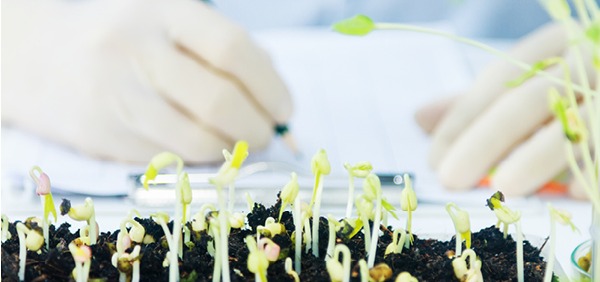Status of Gene Editing Use in Public Canadian Crop Breeding
In Spring 2021, Health Canada released proposed new guidance for the Novel Food Regulations, specifically focused on plant breeding, and conducted an open consultation seeking feedback from both industry stakeholders and general Canadian public. This move reflects the government’s intent to establish a predictable commercialization pathway in preparation for new products that are developed using new plant breeding techniques, more specifically, “gene editing” (GEd) techniques.
BY PETER W.B. PHILLIPS, CSIP DIRECTOR AND JSGS DISTINGUISHED PROFESSOR; DIEGO MAXIMILIANO MACALL, RESEARCH ASSISTANT, CSIP; AND SIMONA LUBIENIECHI, PROFESSIONAL RESEARCH ASSOCIATE, CSIP
…………………………………………………………
Crop breeders have been using genetic improvement technologies for decades, picking up tools that enhance their ability to effect change as they see a fit in their programme. Many tools have been developed to assist plant breeders in developing new cultivars that deliver higher yields, are more resistant to biotic and abiotic stresses, and are better adapted to changing environmental conditions. Most recently, the Clustered Regularly Interspaced Short Palindromic Repeats method (CRISPR/Cas9) of GEd has been touted to have great promise due to its immense versatility and the relative ease with which it can be used. While policymakers are reviewing laws and regulations to anticipate an “imminent” shift towards the use of these kinds of technologies, our research showed that the CRISPR/Cas9 technology is yet to be widely adopted by public crop breeding programs in Canada. This policy brief explores the reasons behind the slow uptake and presents policy recommendations that could enable breeders to make GEd tools part of their ‘toolbox,’ should they choose to make use of them.
Environmental Scan
We screened the peer-reviewed and public access publications of public Canadian crop breeders for evidence of GEd use and found only two instances of CRISPR/Cas9 proof-of-concept applications. This finding seems inconsistent with the findings of a recent survey by Gleim et al. 2020, which shows that both public and private Canadian crop breeders are aware of and knowledgeable about CRISPR/Cas9. Therefore, to get a better understanding of the status of GEd use by public breeding programs in Canada, we interviewed crop breeders from six Canadian universities. Some crop breeders we interviewed reported using CRISPR/Cas9 in their research activities but not in their breeding programs. No other GEd technique was reported as being used among public Canadian crop breeders at this time. CRISPR/Cas9 use remains low for several reasons.
First, asked directly about the existence of barriers (internal or external) to the use of GEd at their host institution, few could identify any specific barriers. It is noteworthy that a significant number of breeders admitted that they were not knowledgeable about the specific rules of their host institution regarding the use of GEd tools.
Second, a concern of most breeders was that even if they successfully developed a trait through GEd, they might not be able to navigate Canada’s regulatory regime in order to bring the resulting crop to market. This uncertainty makes breeders apprehensive about using GEd in their breeding programmes.
Third, pressed on their lack of use of novel crop breeding technologies, a significant number of breeders noted that consumer perceptions were an important factor in their decision about whether to use a new technology in their breeding program. Many breeders asserted that they would not use GEd technologies yet because consumer opinions about these remain largely unknown. One breeder suggested that given that there is no difference between a trait developed through certain GEd techniques or conventionally derived traits at a whole-genome level, reporting on GEd applications might not be strictly necessary in Canada. Meanwhile, critics that are against Health Canada’s recent Novel Food Regulations revision proposal are quick to tie GEd with genetically modified food.
This is an excerpt. Click here to read the full article.
Republished with the author's permission.
